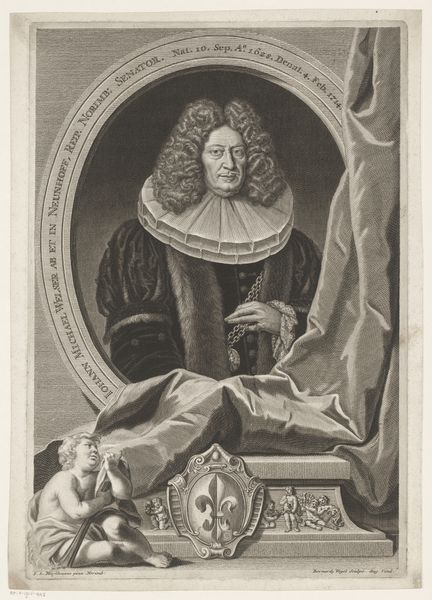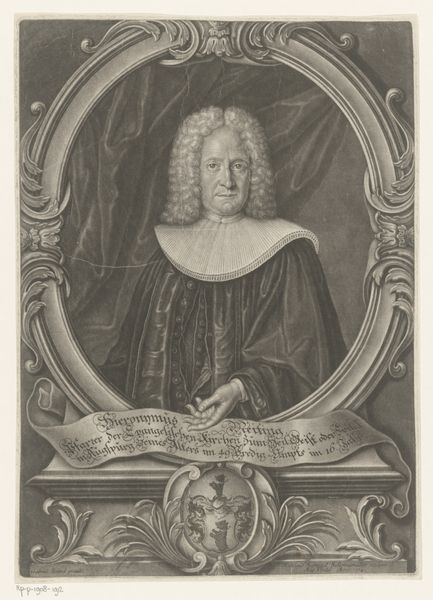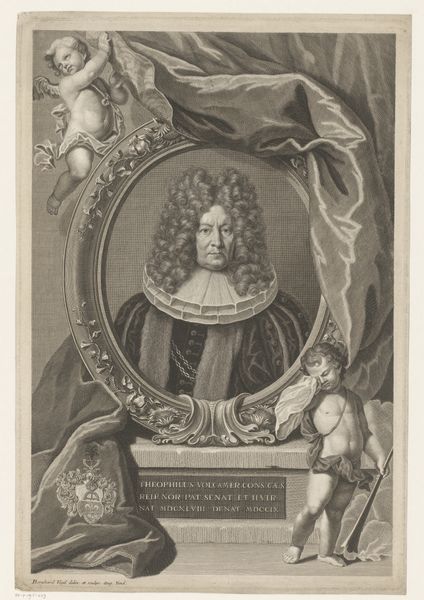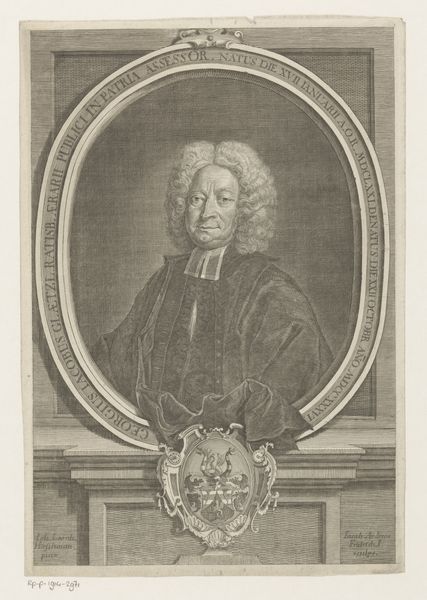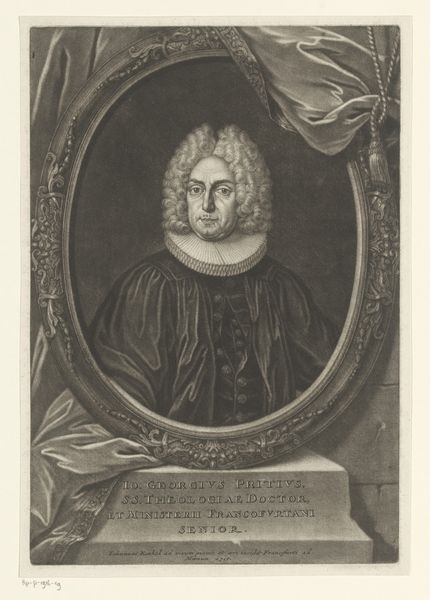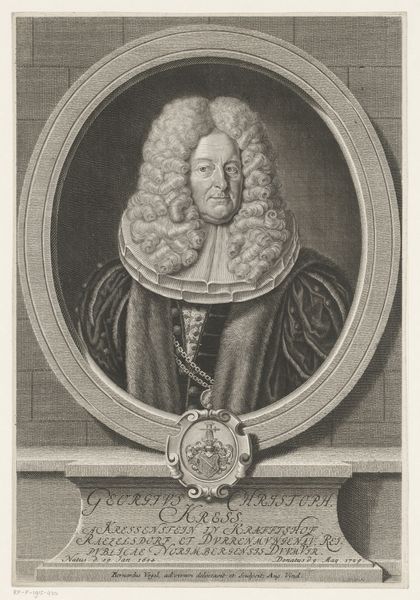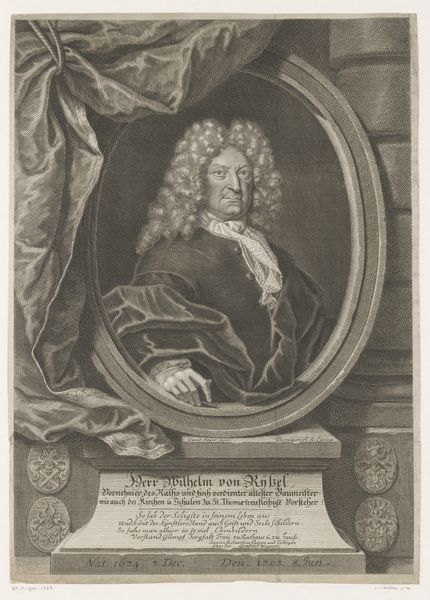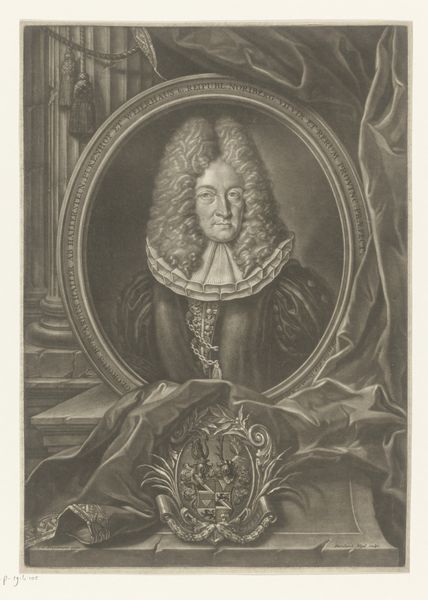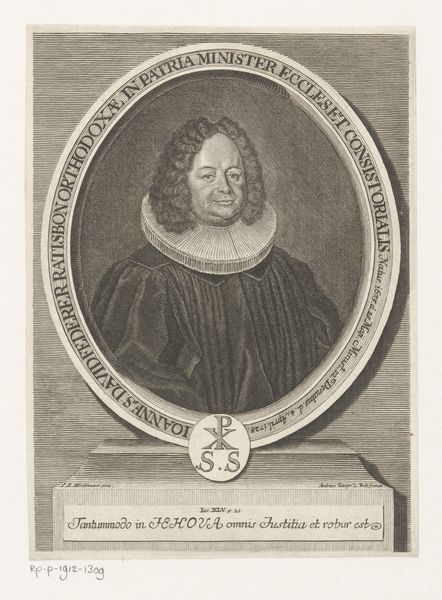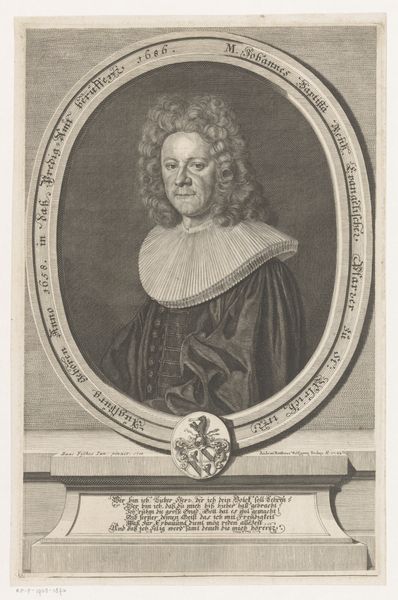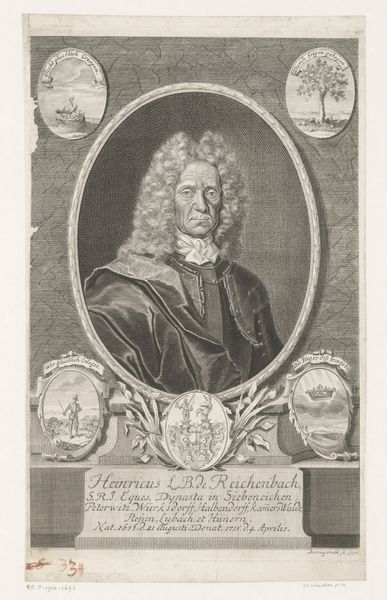
engraving
#
portrait
#
baroque
#
historical photography
#
line
#
history-painting
#
engraving
Dimensions: height 382 mm, width 260 mm
Copyright: Rijks Museum: Open Domain
This is Johann Kenckel’s portrait of Hieronymus Scheurl, made with precision, capturing the essence of its subject with ink on paper. Note Scheurl’s elaborate wig and broad, lace-trimmed collar. These are not merely decorative; they are potent symbols of status and power, reflecting the social norms of the 17th and 18th centuries. Consider the ruff collar. From the simple linen neckwear of the 16th century to the extravagant, multi-layered versions seen here, the ruff's evolution mirrors shifts in societal values, oscillating between modesty and ostentation. Its appearance speaks volumes about the wearer's position and the era's preoccupation with outward display. Such gestures and sartorial choices evoke deep-seated psychological responses. The human mind, attuned to symbols of authority, reacts almost instinctively to these visual cues. Like the recurring motifs in dreams, the ruff resurfaces throughout art history, each time imbued with new cultural significance while retaining echoes of its past. It's a non-linear, cyclical progression, a testament to the enduring power of symbols across time.
Comments
No comments
Be the first to comment and join the conversation on the ultimate creative platform.
